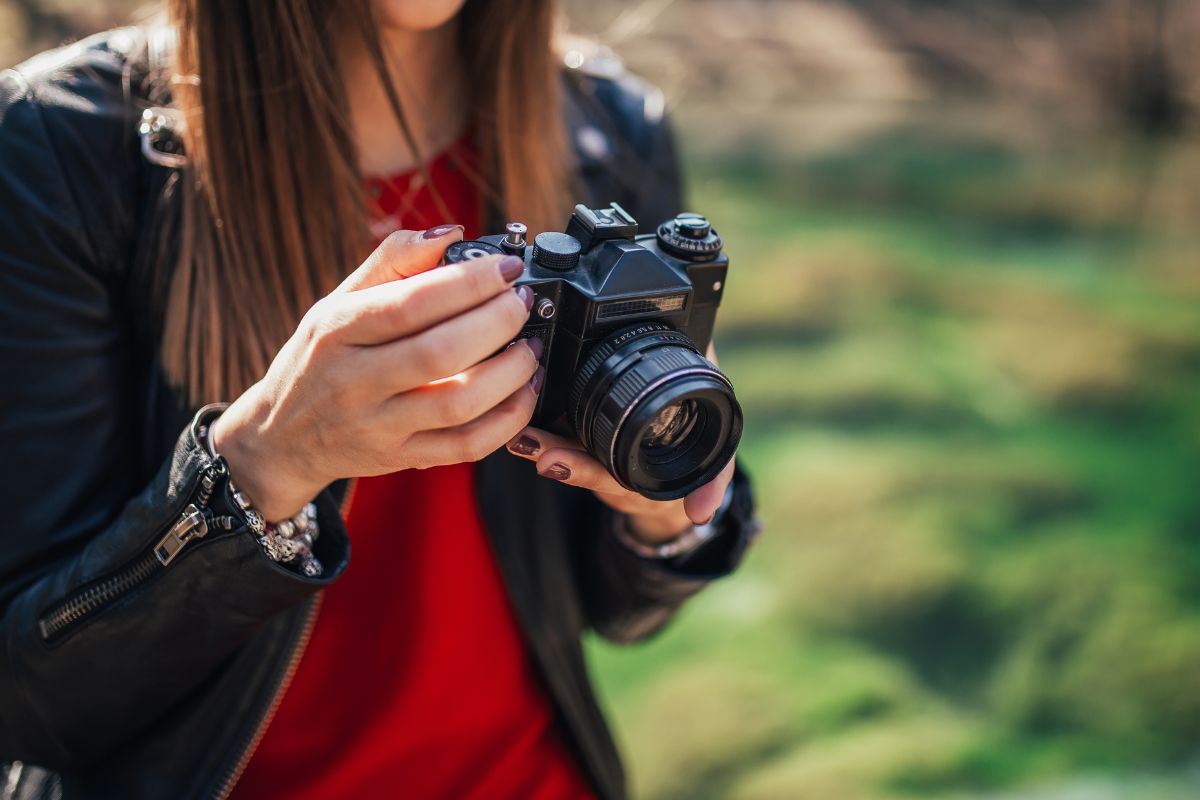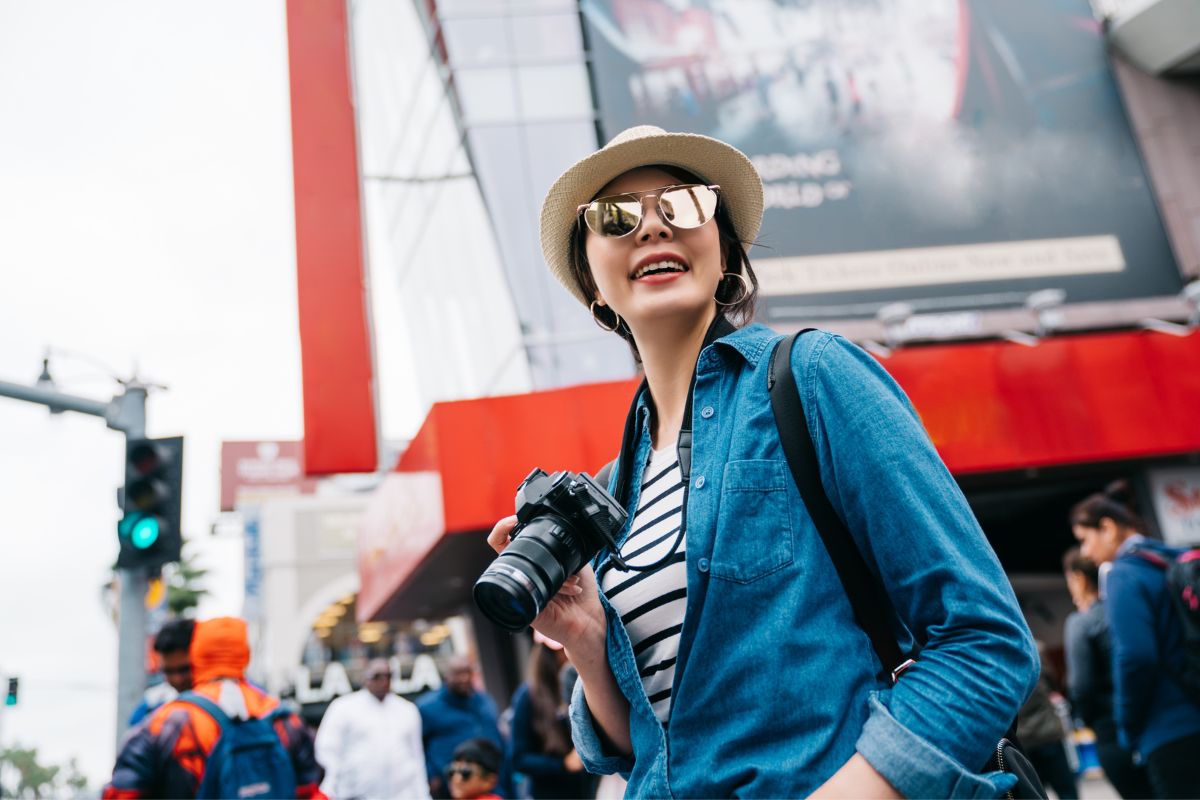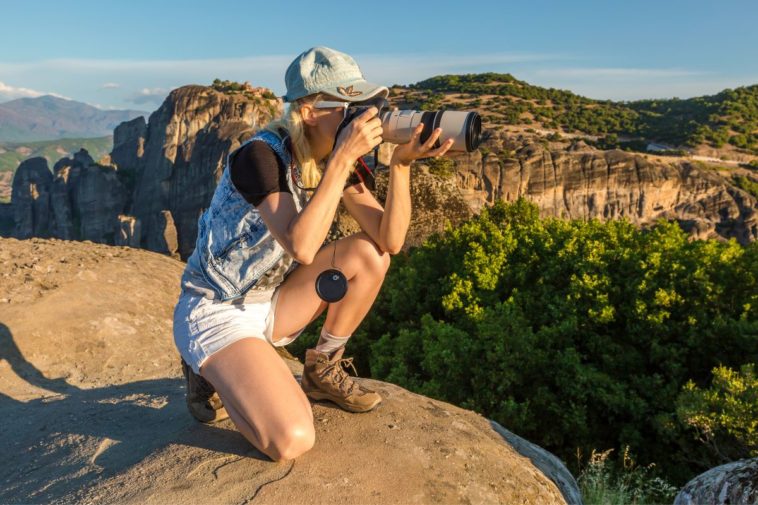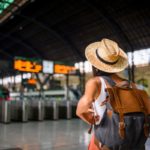Travel photography is the perfect way to engage with the places you’re traveling to.
Whether you’re a person who hasn’t traveled much or somebody who frequently jets off to new and interesting places, photography can be a great way to become more familiar with new settings—and to create some incredible artwork while you’re out there!
With the rise of affordable travel, social media, and an increase in the accessibility of high-quality cameras, there has never been a better time to get into travel photography.
However, there are a few things you’ll need to keep in mind before you head out on your travels.
In this article, we’re going to break down a list of 10 important tips for you to keep in mind that will help you get the most out of your travels, and prepare you to take some incredible snaps when you’re out there!
We’ve also included a short FAQ section to help answer any questions you may have.
What Is Travel Photography?
Travel Photography is a sub-genre of photography that deals with capturing images that represent a location’s culture, landscape, architecture, or people.
It’s a genre of photography that requires a lot of adaptation, combining street photography, documentary, landscape photography, and portraiture.
While you don’t have to be a master at any of these genres to start taking travel photos, these are the kind of settings you’re going to need to get familiar with if you want to take some memorable photos.
While travel photography is often associated with exotic or unique locations, many travel photographers opt to shoot at local destinations. In many ways travel photography is a style.
Travel photography is all about capturing the essence of a location through its images. Alternatively, travel photography can act as a way to capture their own experiences.
There’s no real ‘one way’ to do travel photography, and you can really let your creativity flow while you’re out there experiencing new cultures and places.
Many of the most critically acclaimed photography books out there have come through travel photography.
A great example of this is the photobook “A Period Of Juvenile Prosperity” by Mike Brodie, who at the age of 17 took a camera out with him on a wayward journey across the united states.
Using polaroid imagery, he photographed the other train hoppers and locations he encountered, creating a wonderful photobook that encompasses a unique experience.
Of course, you don’t have to go train-hopping across America to take some wonderful images, but this is an example of how some experience in photography can create some incredible artwork over the course of your adventures.
In the section below, we’re going to give you a rundown of 10 important tips that you can use before you travel.
We’ve tried to make this list inclusive for all different styles of photography and travel, so make sure you read them carefully!

10 Tips For Before You Travel
1. General Organization
Preparation is essential when it comes to travel photography. You need to make sure that you have the necessary equipment, including cameras, lenses, batteries, memory cards, and chargers.
Also, research your travel destination and find out what you need to pack in terms of clothing, medication, and other essentials. It’s always a good idea to make a checklist to ensure that you don’t forget anything important.
To give you a good idea of how to organize this general preparation, we would suggest making a list of everything you will need to take with you.
There’s nothing worse than showing up to a new location, only to find that you have left an important piece of equipment.
Create a simple checklist that you can work your way through as you prepare for your trip, taking into account some of the next points on our list.
2. Gear
When it comes to gear, it’s essential to find the right balance between weight and functionality. You don’t want to carry too much gear, as it can be cumbersome and tiring.
However, you also don’t want to miss out on the opportunity to capture stunning images because you left a crucial piece of equipment at home.
Consider the type of photography you plan on doing during your travels and choose the gear accordingly.
For instance, if you plan on doing landscape photography, a wide-angle lens may be more suitable. If you’re interested in street photography, a fast prime lens may be the better option.
If you want to do a combination of the two, then you should either pack additional lenses or find one that works as a good middle-ground between the two styles.
3. Purchase Film
If you’re still shooting on film, make sure to purchase enough film for your trip. Depending on where you’re traveling, it may be challenging to find the film stock you’re looking for, so it’s always better to stock up before you leave.
This is especially important if you’re going to remote locations and shooting in areas where there are no stores or places where you can get film delivered.
Also bear in mind that there’s a chance your film could get spoiled, so make sure you have the necessary storage and a safe place in a bag where you can stash your film until it’s ready to develop!
4. Purchase Extra Data Storage
With digital photography, it’s easy to take thousands of images in a short amount of time. However, that also means you need to have ample data storage.
Invest in extra memory cards and external hard drives to ensure that you have enough storage space for all of your photos.
Also consider backing up your images regularly to avoid the risk of losing them if something happens to your camera or memory cards.
You should probably plan out how many images you’re looking to take before you head off, and make sure that the storage you have can accommodate them!
5. Research Locations
Researching your travel destination ahead of time can help you plan your shots, as well as discover unique locations and angles that you may not have otherwise considered.
You can use online resources such as travel blogs, forums, and social media platforms to get ideas and inspiration. You can also use Google Maps and Street View to scout out locations and get an idea of the surrounding area.
If you’re going on a trip for editorial purposes, then this step is going to be even more important. The more you research, the more prepared you will be for when you’re out on your trip.
Having to spend the time to search for unique locations can greatly impact the amount of time it takes you to create engaging shots, so you’ll want to plan this ahead of time.
It’s also worth noting that sometimes the best shots come through chance, so don’t feel afraid to simply wander around once you get to the destination.
This fluid nature can really help make your photography feel alive. We’d recommend a mixture of preparation and shooting on the fly for the best results! Often, seeing things in person is better than on a screen!
6. Brainstorm Compositions
Before you travel, take some time to brainstorm potential compositions and shots you’d like to capture. This can help you create a shot list and stay organized while you’re on the go.
Consider what types of images you want to capture, such as landscapes, street scenes, or portraits, and think about the composition and framing that would work best for each.
It will also give you some direction on your journey, especially if you are looking to have long days filled with a lot of shooting.
You can always make small storyboards that will give you an idea of how potential shots could look, especially with fixed locations such as landmarks or architecture.
7. Consider Lighting
Lighting is one of the most critical aspects of photography, and it’s especially important when it comes to travel photography.
Different locations have different lighting conditions, and it’s important to be aware of this when planning your shots.
Research the weather conditions and time of day that would be best for capturing the images you want.
For example, if you’re interested in landscape photography, the golden hours of sunrise and sunset can provide stunning lighting conditions.
Similarly, if you’re shooting in a city, consider the time of day when the light hits the buildings in the most flattering way.

8. Prepare Interactions With Locals
Interacting with locals can be an excellent way to capture unique and authentic images of a location.
People can add life and personality to your images and make them stand out from the typical tourist shots.
If you’re usually a very social person, this can be a very natural process for you, and you won’t have to go out of your way to plan this ahead of time.
However, if you’re not somebody who likes to speak with others, then this could be a lot more difficult.
Thankfully, you can get around this problem by planning ahead of time! Take a look at some specific communities you’d like to interact with before you head out on your trip.
Perhaps you want to photograph some of the music scene of a specific city—if this is your goal, then you should look online for people in this industry. Reach out and drop them a message, asking if you’d be able to photograph at a show.
Doing this ahead of time can be a great way to ensure you will have subjects for your photography, and you’ll probably make some good friends too!
9. Prepare To Experiment With Composition and Angles
Experimenting with different angles and compositions can help you capture unique and creative images that stand out from the typical tourist shots.
If you want to really push yourself on your next travel photography trip, then it can be good to plan ahead for this.
Consider the equipment you’ll need to create different compositions and make a list in a journal of how you would like to experiment.
Writing these goals down can keep the ideas fresh on your mind for the next time you’re out on a shoot! Experimentation like this can often lead to incredible new styles and avenues for you to explore as an artist!
10. Plan Ahead To Make Your Trip Easy
If there’s one thing that can ruin a travel photography trip, it’s not having all of the finer details of your trip organized.
If you’re going somewhere to shoot, then you want to be able to spend as much of the time you have shooting and enjoying the experience. For this reason, make sure you have everything in order before you go.
Make sure you have budgeted accordingly, booked all your accommodation, and have your meals planned out.
If you’re a person who likes to go with the flow, this might not be as important, but the more you plan ahead of time the less you will get caught up with other problems while out there trying to shoot!
Final Thoughts
Travel photography can be a fantastic way to capture and share your experiences with others.
With careful preparation, attention to detail, and a willingness to experiment, you can create stunning images that showcase the essence of your travel destination.
Remember that travel photography is more than just taking great photos; it’s about immersing yourself in the culture, meeting new people, and experiencing new places.
By taking the time to plan and prepare for your trip, you can create a more enjoyable and rewarding experience for yourself and capture images that tell a story.
We hope that this article has given you some practical tips that will help you on your next trip!
If you keep a few of these in mind before heading out, you’re likely to have a much better experience, and therefore take some great shots! If you still have some questions, keep reading for our short FAQ.
Frequently Asked Questions
What Is The Best Type Of Gear For Travel Photography?
The gear you need for travel photography will depend on your personal preferences and the type of photography you want to do.
However, some essential gear includes a camera, lenses, memory cards, and a tripod. You may also want to consider additional gear such as filters, a camera bag, and a laptop for photo editing and storage.
Some photographers choose to edit in the evening when they’re chilling out at a hotel or hostel.
Do I Need A Professional Camera?
You don’t need a professional camera for travel photography.
While a high-quality camera can help you capture better images, many point-and-shoot cameras and even smartphones have advanced camera technology that can produce excellent images.
It’s important to take the camera that best fits the project/style you’re looking to experiment with!
What Are Common Mistakes People Make In Travel Photography?
Some of the most common mistakes to avoid in travel photography include forgetting to adequately research your destination, not preparing your gear and storage, not being respectful of locals and their culture, and not taking the time to enjoy the experience of traveling.
It’s very important to note that depending on where you are in the world, there may be different laws about taking photos out in public, so consider and research this before you embark on your travels!
How Can I Edit My Photos?
Most photographers use photo editing software such as Adobe Lightroom or Photoshop.
Once you’ve edited your photos, you can share them on social media platforms such as Instagram or create a travel journal or photo album to showcase your best shots.
Some photographers also choose to create photobooks which can then be published and/or sold to share with others.



